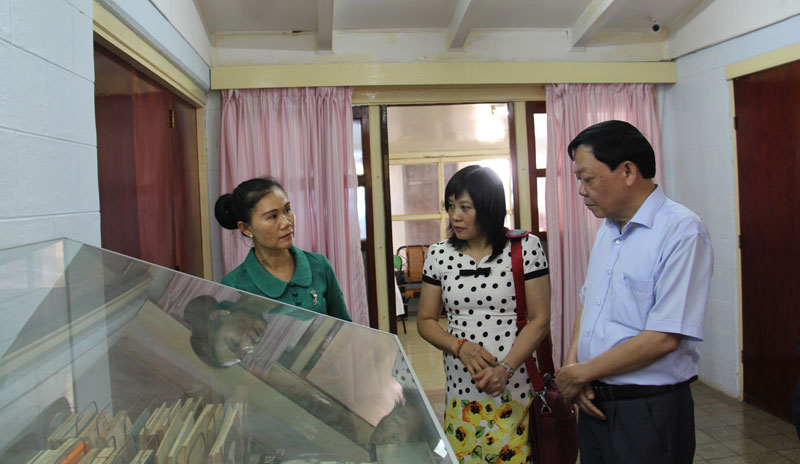
(HBO) – A delegation of the Hoa Binh provincial Department of Culture, Sports and Tourism has paid a working visit to the Kaysone Phomvihane Museum in Laos to bolster cooperation in professional activities.
The visit aimed to share experience in document and artifact
collection, restoration, along with preservation and promotion of values of
Vietnam-Laos revolutionary relic sites in Hoa Binh province.
Singthong Singhapanya, a leader of the Kaysone
Phomvihane Museum, welcomed the delegation’s working visit to Laos. He affirmed
that the Party and State of Laos are interested in the collection of documents
and the restoration and preservation of Vietnam-Laos revolutionary relic sites,
including those in Hoa Binh province.
He highlighted the importance of the Vietnam-Laos
relic sites in Hoa Binh to Laos’s revolution as well as the managing board of
the Kaysone Phomvihane Museum, noting that these relic sites provide more
evidence of the special friendship between the two nations.
The two sides agreed to cooperate in collecting
relevant documents and restoring and preserving these relic sites.
The delegation of the Hoa Binh Department of Culture, Sports
and Tourism visits the house of late President Kaysone Phomvihane in the
Kaysone Phomvihane Museum in Laos.
After discussing, the two
sides signed a memorandum of understanding. Accordingly, they agreed to
continue cooperating in professional activities, including studying and
collecting artifacts. They will also keep working together to preserve and
bring into play values of the two Vietnam-Laos revolutionary relic sites in Hoa
Binh. Communications activities will also be increased to raise people’s
awareness of the special bilateral friendship as well as the significance of
the two relic sites in the province.
In 2019, the Vietnamese side will invite a
delegation of Laos to visit Hoa Binh to discuss the cooperation.
During their stay in Laos, the Hoa Binh
delegation visited to collect information at some other museums and historical
and cultural relic sites of Laos. They also interviewed two persons who
directly prepared for and attended the preparatory congress for the second
Congress of the Lao People’s Party (now the Lao People’s Revolutionary Party)
in Hoa Binh in 1971.
With an increasingly vibrant and widespread emulation movement aimed at building cultured residential areas and cultured families, Yen Thuy District has been making steady progress toward improving both the material and spiritual well-being of its people, while fostering a civilized, prosperous, beautiful, and progressive community.
Once lacking recreational spaces and community facilities, Residential Group 2 in Quynh Lam Ward (Hoa Binh City) has recently received attention for the construction of a new, spacious, and fully equipped cultural house. The project followed the model of state support combined with public contributions in both labor and funding.
The "All people unite to build cultural life" movement, which has been effectively integrated with Kim Boi district’s socio-economic development goals, is fostering a lively spirit of emulation across local residential areas, hamlets, villages, public agencies, and enterprises. In addition, through the initiative, traditional cultural values are being preserved and promoted, while community solidarity and mutual support in poverty reduction and economic development are being strengthened.
A working delegation of the Hoa Binh provincial People’s Committee led by its Permanent Vice Chairman Nguyen Van Toan on June 11 inspected the progress of a project to build the Mo Muong Cultural Heritage Conservation Space linked to tourism services in Hop Phong commune, Cao Phong district.
Born and growing in the heroic land of Muong Dong, Dinh Thi Kieu Dung, a resident in Bo town of Kim Boi district, in her childhood was nurtured by the sweet lullabies of her grandmother and mother. These melodies deeply imprinted on her soul, becoming an inseparable part of her love for her ethnic group's culture. For over 20 years, this love for her hometown has driven Dung to research, collect, and pass down the cultural values of the Muong people to future generations.
In the final days of May, the Ethnic Art Troupe of Hoa Binh Province organized performances to serve the people in remote, mountainous, and particularly disadvantaged areas within the province. These were not just ordinary artistic shows, but they were the meaningful journeys aimed at spreading cultural values, enhancing the spiritual life of the people and contributing to the preservation of ethnic minority cultural identities.



